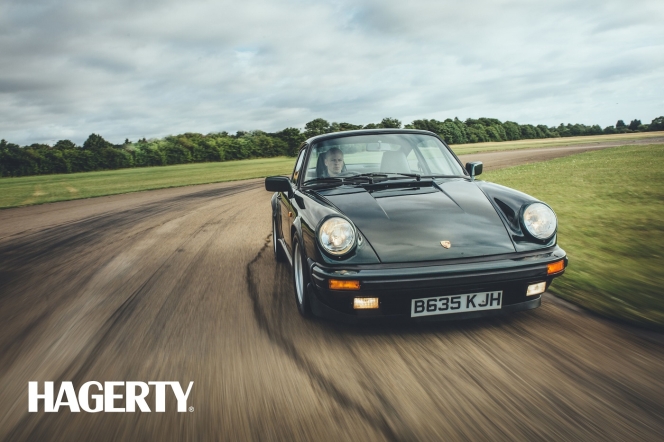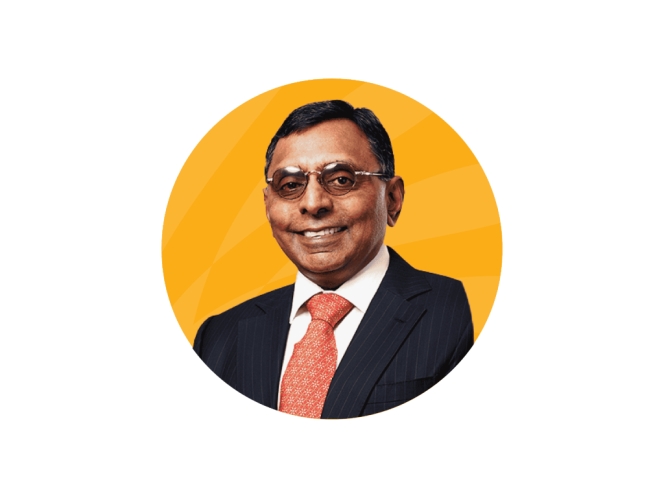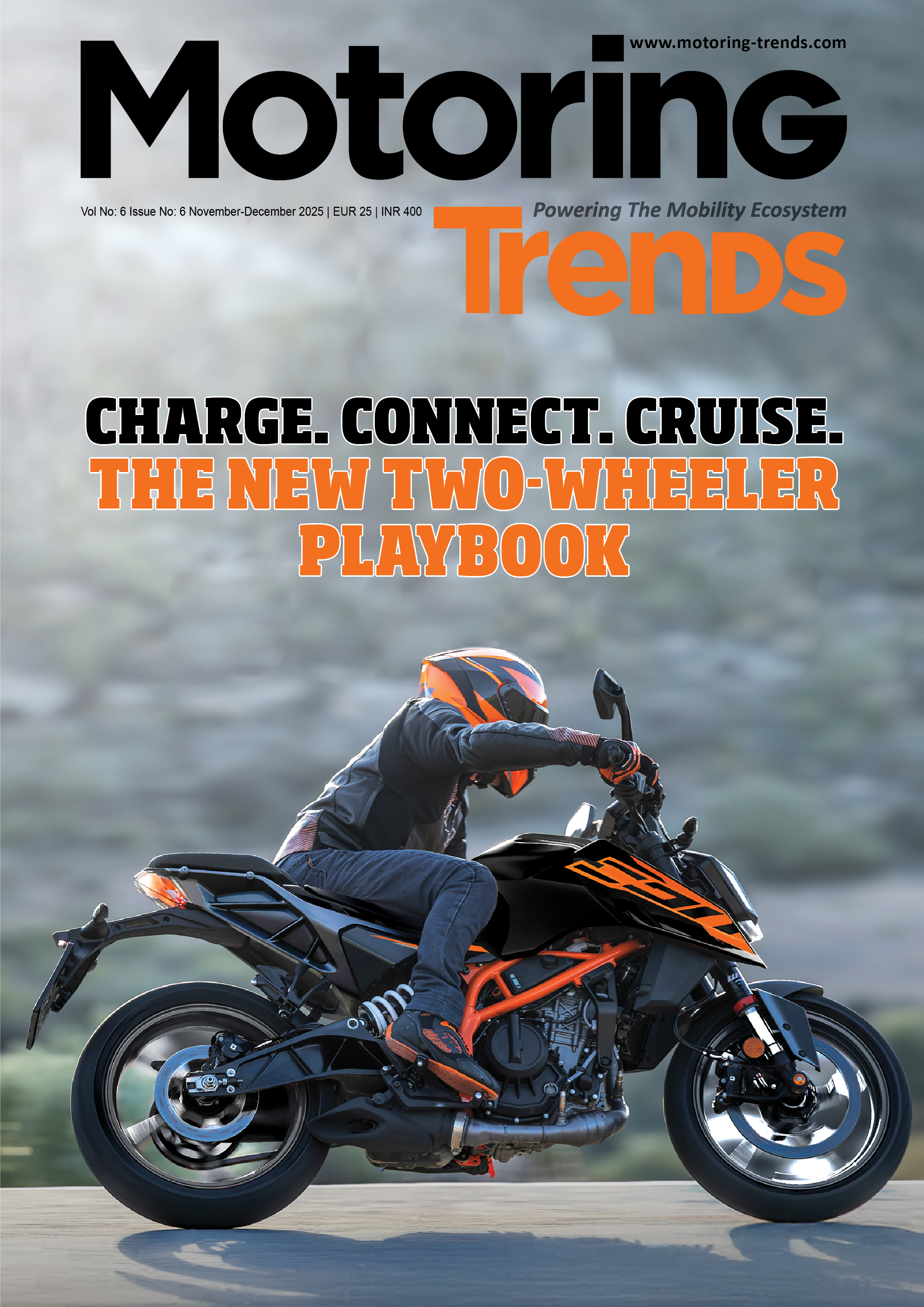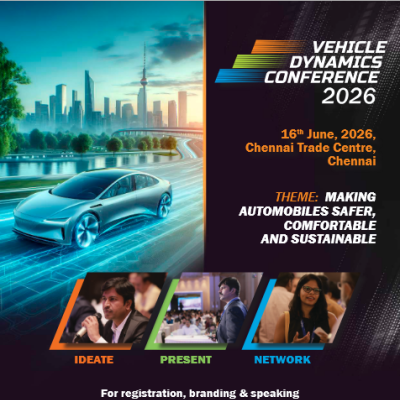ESI Emphasises On Results, More Than Products: Emmanuel Leroy
- By MT Bureau
- June 22, 2021

OEMs are facing new challenges to improve the existing technologies and develop next-generation ones for the new mobility in shorter times. Reducing market responding time along with new complexities are paving the way for virtual simulation, which displaces physical tests and prototypes by virtually replicating product development, testing and manufacturing with simulations. Emmanuel Leroy, Executive Vice-President Industry Solutions at ESI Group, explains, “We enable our customers to drastically reduce every additional physical prototype by using our solutions. In the end, only one physical prototype is required to validate the whole concept. We envision that one day we may be able to virtually certify a product from end to end.” Excerpts:
 Q) How did the Covid impact the software and services businesses of ESI Group?
Q) How did the Covid impact the software and services businesses of ESI Group?
The Covid pandemic has accelerated the need for more digitalisation within the industrial market. It has also somehow accelerated the readiness level of our customers and made solutions such as virtual prototyping even more relevant. Indeed, we enabled the continuity of our clients’ business. The use of virtual prototyping allowed them to continue designing, testing and prototyping their products. Our human-centric approach – one of ESI Group’s four outcome solutions – was particularly used by our customers to ensure the continuity of their businesses: using virtual reality to experience the product from home.
During pandemic times, we also provided our CFD (computational fluid dynamic) solutions to help investigating different scenarios to demonstrate the effect of occupant proximity, ventilation systems and contamination avoidance unique to each office and plant environment. ESI Group developed different virtual scenario, based on its facilities in India, to optimise the return to offices and on plant – especially on a car assembly line.
How the growing complexity of part process is influencing the virtual testing?
We notice that the automotive industry is facing more and more draconian regulations, disruptive technologies, intensifying competitions and shortening response time. Coupled with these, customers are getting more demanding on quality, reliability, safety and production deadlines in the business. Indeed, end users are no longer looking for products but for results (flight hours instead of engines, number of possible kilometres instead of electric car, etc.) and they seek for committed and responsible automakers to motivate their buys. At ESI Group, we have understood these preoccupations and we have defined four primary solutions answering our customers’ expectations.
 The first one is the Pre-certification and Validation, enabling gains in performance and productivity. The purpose is double: meeting certification and validation requirements like crash, safety and fatigue issues in the first attempt and then increasing productivity with predictive models and process automation.
The first one is the Pre-certification and Validation, enabling gains in performance and productivity. The purpose is double: meeting certification and validation requirements like crash, safety and fatigue issues in the first attempt and then increasing productivity with predictive models and process automation.
The second outcome is Smart Manufacturing, which enables to establish the right manufacturing processes to meet the performance indicators for industrial products and processes.
The Human-Centric Product and Process Validation, our third outcome, focuses on humans by implementing an operator-centric approach to ensure the efficiency of assembly, maintenance operation and the safety of human interactions.
The last one, Pre-experience, is the most advanced solution of ESI Group. Here, our customers and the operators do not look at the product itself, but virtually experience a product, component, subsystem or system under numerous conditions and environments.
Using these approaches, we identify industry challenges from the customer’s perspective and support them in achieving their results.
Finally, as products are getting more complex, one of our strengths is our end-to-end multi-material assembly solution with modelling of different materials (steel, aluminum, composite) and manufacturing processes, covering all the product development cycle.
What will be the growth drivers for the internal combustion engine-driven vehicles business?
Safety is essential and will remain a key driver in the future. Today, the active safety is gaining traction owing to the regulations and overall trends. There is an increasing demand for smart integrated safety, which caters to both active and passive what?
Alongside there are regulations on Co2. In Europe, the Worldwide Harmonised Light Vehicle Test Procedure (WLTP) Norm is challenging and will eventually be implemented in other countries. Regarding Co2 reduction, we focus part of our research and innovation around engine efficiency, aerodynamics and light-weighting, as we did with Bentley for instance.
OEMs are also looking to reduce the manufacturing cost and development time which are leading demand for virtual prototyping, digital twin and shifting OEMs’ investment from hardware to software. The end-to-end value and the digital continuity from the early design to the production is essential to achieve these goals.
OEMs are exploring possibilities to manufacture ICE vehicles and EVs on the same line. Being a solution provider for the smart manufacturing process, how do you see this as a challenge?
Some OEMs assemble EV and ICE vehicles on the same line and look for flexibility, while others use completely dissociated platforms. We, consequently, must find the right strategy regarding their requirements. The new upcoming challenges in CASE mobility manufacturing will bring even more complexities from components to manufacturing. We have to consider the complexity to train the operators: our virtual reality solutions are key here. We help our customers by providing training, on both ICE vehicles and EVs manufacturing processes to their team, even from different place around the world, gathered on the same interface. This solution gathers all stakeholders (from operators to QHSE officers and plant managers) around the same product. This immersive tool helps getting complementary feedbacks early on in the process.

Where do you find more competencies or comfortability — in the complete vehicle design or component design?
Clearly, we are positioning ourselves on the whole vehicle design as it gives the most significant benefit for the OEM and other customers. We are talking about an end-to-end value that we can demonstrate on full scale CAE demonstrators. When it comes to a standalone component, the complex interactions between components and environment are not well taken into account and can lead to reduced predictiveness. In this case, we come up with a holistic view of the problem itself. It is how we defined the four outcome solutions introduced earlier.
Do you think that virtual prototypes will, at a 100 percent, completely replace physical ones ?
Virtual prototypes are step by step replacing physical prototypes. Nevertheless, I think physical prototypes remain today essential to certify the product at the very end of the development phase. To give an example, in 2019 Renault succeeded a 5-star rating of its Clio 5 on the Euro NCAP safety certification test with a single physical prototype, the one needed for the consumer test. Virtual certification is a topic discussed within the automotive ecosystem, allowing to solely relying on the simulation from end to end. But we are not at that point right now.
Which is your largest market for automotive business?
The automotive industry is the most significant contributor to our total revenues. Today, Japan is the largest market for our automotive business. However, India has been an important market for ESI, and it has been growing quite well over the years.
Most of our engineering developments teams, for both our software and our platforms, are based in India.
What are the challenges in the business?
The increasing complexity I mentioned before is definitely a challenge, but it also brings opportunities to us. Our end-to-end multi-material, multiprocess solutions and chaining capabilities are key to overcome the challenges of the automobile market. Due to the ever growing content of electronics, system simulations and systems of systems techniques are improving as well. Our focus is to strengthen our collaboration with partners in the ecosystem to support the customers in solving their complex problems. (MT)
- Hagerty UK
- Vehicle Excise Duty Exemption
- VED Exemption
- Historic & Classic Vehicles Alliance
- Classic Cars
UK Chancellor Maintains Vehicle Excise Duty Exemption For Classic Cars
- By MT Bureau
- November 27, 2025

The UK's cherished classic car community can finally breathe a collective sigh of relief. The decisive action by Chancellor Rachel Reeves in the Autumn Budget to maintain the Vehicle Excise Duty (VED) exemption for vehicles over 40 years old has ended a prolonged period of uncertainty, securing a stable future for this vital sector. Mark Roper, Managing Director of Hagerty UK, welcomed this clarity, noting that the confirmed freeze on fuel duty further solidifies a supportive environment for owners. He underscores that this is a significant win for the GBP-7.3-billion industry that supports over 100,000 jobs and contributes GBP 3 billion annually to the UK economy, all while championing an inherently sustainable form of motoring.
This perspective on sustainability is reinforced by Dale Keller, CEO of the Historic & Classic Vehicles Alliance (HCVA), who affirms that the tax exemption logically aligns with environmental objectives. Classic vehicles, preserved as moving heritage, have a negligible lifecycle carbon footprint compared to new manufacturing and are driven infrequently. The original principle of the exemption remains valid, as applying a modern tax to these rarely used assets would be inequitable.
Alongside the VED news, the Chancellor confirmed the continuation of the MOT exemption for classic cars, though this will remain under review. On this point, Roper of Hagerty UK strikes a note of caution, observing that many within the industry advocate for an annual roadworthiness check. He notes that a great number of responsible classic owners voluntarily submit their vehicles for an MOT each year, valuing the independent assurance of safety and mechanical integrity it provides.
For Hagerty UK, as a specialist insurer deeply embedded in this world, the government’s affirmation is a powerful endorsement of the sector's cultural and economic value. Through its vibrant Clubhouse at Bicester Heritage and unique events like RADwood, Hagerty is actively fostering this passionate community. Similarly, the HCVA continues its mission to protect and promote the diverse ecosystem of specialists, restorers and businesses that form the backbone of this multi-billion-pound industry, ensuring its legacy for generations to come.
Mahindra Racing Extends Formula E Involvement With GEN4 Manufacturer Commitment
- By MT Bureau
- November 26, 2025

Mahindra Racing has solidified its long-term future in electric motorsport by confirming its manufacturer commitment to the GEN4 era of the ABB FIA Formula E World Championship, starting in 2026/27. This announcement, made during the unveiling of its new M12Electro race car in India, extends a relationship that began in 2013 when Mahindra stood as both a founding team and the first OEM to join the all-electric series.
The team's current trajectory underscores the significance of this pledge. Following a dramatic 18-month transformation under CEO and Team Principal Frederic Bertrand, Mahindra Racing has evolved from a backmarker into a consistent front-runner. This resurgence was powered by the redesigned M11Electro, in which drivers Nyck de Vries and Edoardo Mortara collectively secured five podium finishes in Season 11, catapulting the squad to a stellar fourth place in the world championship. The newly launched M12Electro is the intended vehicle to maintain this status as a top-five contender and a regular threat for podium positions in the forthcoming season.
The technical landscape for GEN4 promises to further electrify the sport. The next-generation cars will boast a peak race power of 450 kw, with a potent 600 kw available in ATTACK MODE to empower aggressive overtaking. Enhanced strategic possibilities will come from a race energy capacity of up to 55 kWh and a remarkable 700 kw of regenerative braking. In a continued commitment to sustainability, the GEN4 chassis will be produced from 100 percent recyclable materials and will feature two distinct aerodynamic configurations – high-downforce for qualifying and low-downforce for races – to optimise performance.
Mahindra's ambition is to leverage this new regulatory chapter to build on its renewed momentum, chase incremental gains and establish itself as a confirmed championship contender against elite manufacturers like Porsche and Jaguar. This competitive platform also serves a broader purpose, aligning with the Mahindra Group’s sustainability initiatives. The team, the first in Formula E to earn the FIA’s Three-Star Sustainability Accreditation, has embarked on its ‘Planet Positive’ programme. This initiative is dedicated to driving positive impact in communities and economies, accelerating climate solutions and using the intersection of sport and technology as a catalyst for a better future.
R Velusamy, Chairman, Mahindra Racing, said, "Mahindra Racing has always been a symbol of our commitment to the Race to Road journey – where cutting-edge innovation on the track directly shapes the clean, intelligent and high-performance mobility solutions we deliver to customers. Formula E is a powerful platform for innovating new technology, giving us the ability to experiment, learn and advance electric powertrain efficiency, sustainable materials and software intelligence. As we step into the GEN4 era, our ambition only grows stronger. Continuing this journey till 2030 is a testament to our belief in the sport, in electrification and in India’s role in leading global sustainable mobility. We are proud to champion this future, and GEN4 represents an exciting new chapter for Mahindra Racing and the Mahindra Group.”
Frederic Bertrand, Team Principal, Mahindra Racing, said, “I’m delighted to share this announcement that Mahindra Racing will remain in Formula E as a manufacturer for the GEN4 era. As a team, we have been on a fantastic journey over the past two seasons. What we have built and achieved as a group has been exceptional, and with this announcement, we now have the platform to keep growing and developing and achieve even greater success in the future. None of this would be possible without our colleagues across the Mahindra Group. They have bought into the project and the vision, and we will keep working hard to not only make India proud but also showcase exactly why it has the potential to be a major player on the world stage in the automotive and technology industries. Their enthusiasm to ‘Scream Electric’ is hugely inspiring to the whole team, and we will continue to represent them with pride in this next exciting chapter of our Formula E story in the coming years.”
Jeff Dodds, CEO, Formula E, said, “We’re thrilled to confirm Mahindra’s long-term commitment to the GEN4 era of the ABB FIA Formula E World Championship. As one of our founding teams, Mahindra has been with us since the very beginning, consistently championing electric racing and innovation. Their bold vision for sustainable mobility and continued investment in advanced EV technology perfectly align with Formula E’s mission. Mahindra’s enduring presence not only strengthens our position in a key market but also reinforces Formula E’s role as a global platform for driving positive change. We’re excited to see what they’ll achieve in this next chapter of performance and progress.”
Marek Nawarecki, Senior Circuit Sport Director, FIA, said, “Following the GEN4 reveal and the really positive sentiment reported, we are pleased to announce Mahindra as the sixth manufacturer to commit to Formula E’s GEN4 era. This is testament to the relevance of the road map we are implementing in Formula E for OEMs. GEN4 underscores just how far the ABB FIA Formula E World Championship has come since 2014 and we are looking forward to continuing this journey with Mahindra as one of the founding teams and partners.”
Mahindra Charts Aggressive Decade Of Growth Across Auto, Farm, CV And Last-Mile Mobility Businesses
- By MT Bureau
- November 21, 2025

Mumbai-headquartered conglomerate Mahindra Group has unveiled an ambitious long-term roadmap across its core mobility and equipment businesses, detailing plans for accelerated growth in the automotive, farm equipment, commercial vehicle and last-mile mobility segments.
The strategy, presented at its Investor Day 2025, underscores the Group’s intent to leverage India’s expanding economy while deepening global market participation.
Mahindra expects its consolidated automotive business to grow 8x between FY2020 and FY2030, driven primarily by a stronger push in sports utility vehicles (SUVs) and light commercial vehicles (LCVs).
The company aims to become the world’s fastest-growing SUV brand. Its product strategy is rooted in new-age platforms such as INGLO and NU_IQ, enhanced digital architecture under MAIA and Adrenox, and continued investment in safety and performance.
At present, Mahindra holds more than 26 percent revenue share in India’s SUV segment as of the first half of FY2026. Strong consumer traction for models including the Thar, XUV700, XUV3XO and the Born Electric (BE) series is expected to support the company’s international expansion to right-hand-drive and left-hand-drive markets across Europe, Australia, Africa and other regions.
Strengthening leadership in LCV segment
The LCV business, where Mahindra commands 54.1 percent volume share in vehicles under 3.5 tonnes (as of H1 FY2026), is set to be another pillar of growth. The product range has broadened through the Supro, MaXX and Veero platforms, including CNG and electric variants. The company is also preparing for wider adoption of lifestyle pickups, led by the upcoming Global Pik Up.
Mahindra’s LCV strategy emphasises best-in-class total cost of ownership, reduced downtime, enhanced comfort and technology integration, with the segment also targeted for eightfold revenue growth during the decade.
Farm business
Mahindra, the world’s largest tractor manufacturer by volume, has outlined plans for threefold revenue growth in its farm equipment division between FY2020 and FY2030.
The Indian tractor market has continued to shift towards higher horsepower models, particularly in the 40–50 HP range. Mahindra aims to consolidate share in this segment through newer platforms including Yuvo Tech+, Swaraj Protek and Next-Gen ranges. Improvements in crop profitability and a more favourable price environment for tractors are expected to support industry expansion.
Mechanisation levels in India remain uneven, with significant headroom in sowing, crop care and harvesting equipment. Mahindra is expanding its farm machinery portfolio while leveraging its extensive dealer network and manufacturing footprint. The division, already a business exceeding INR 10 billion, is poised for rapid scaling.
Mahindra continues to build presence in key global markets:
- Brazil: 8 percent share in the sub-120 HP category, and about 20 percent in sub-50 HP
- North America: more than 10 percent share in sub-20 HP; upcoming launches to deepen penetration
- ASEAN: early progress with about 4 percent share in pilot territories
Electrification, autonomy, precision agriculture and pay-per-use technology services form the next frontier for Mahindra’s farm business.
Targeting Top-Three Position in ILCVs
Following the acquisition of SML Isuzu, Mahindra is advancing a strategy to be among the top-three player in India’s intermediate and light commercial vehicle (ILCV) market. The domestic CV industry is projected to grow from approximately INR 15,000 billion in FY2025 to nearly INR 20,000 billion by FY2031, supported by infrastructure development, logistics modernisation and GST-driven reforms.
Mahindra aims to expand its presence in ILCVs, while pursuing a selective play in the heavy commercial vehicle category. The strategy benefits from combined advantages across product development, sourcing, aggregates, telematics and network coverage. The company expects up to sixfold revenue growth in its CV business during the decade.
Last-Mile Mobility
Mahindra Last Mile Mobility (MLM) is shaping an aggressive electrification-led growth plan, targeting sixfold revenue expansion and a cumulative one million electric vehicles on the road by 2031. EV sales climbed to 78,678 units in FY2025, led by the Treo series, which remains India’s top-selling electric three-wheeler.
The division has:
- Strengthened its engineering capabilities with a 400-member product development team
- Commissioned a new state-of-the-art manufacturing plant in Telangana
- Expanded production capacity two-fold
- Developed proprietary battery, motor and telematics systems
The product roadmap includes advanced electric three-wheelers and electric four-wheelers tailored for last-mile applications, along with plans to expand exports to more than ten markets. Mahindra’s EV fleet has cumulatively saved over 300 million litres of fuel and prevented more than 185 kilo tonnes of carbon dioxide emissions.
Across all mobility segments, Mahindra’s plan is anchored in product leadership, technology integration, capital discipline and global expansion. A stronger focus on electrification, platform consolidation, digital interfaces, manufacturing efficiency and customer-centric service models is expected to underpin the Group’s growth trajectory.
- Murugappa Group
- Arunachalam Vellayan
- Coromandel International
- EID Parry
- EXIM Bank
- Kanoria Chemicals & Industries
- Indian Overseas Bank
Murugappa Group’s Former Chairman Arunachalam Vellayan Passes Away At 72
- By MT Bureau
- November 18, 2025

Chennai-based conglomerate Murugappa Group has announced the passing of Arunachalam Vellayan (1953–2025) following an illness.
Vellayan was the Chairman Emeritus of Coromandel International and the Former Chairman of the Murugappa Group. He is survived by his wife, Lalitha Vellayan, his sons, Arun Vellayan and Narayanan Vellayan, and his grandchildren.
The Former Chairman dedicated several decades to the Group, providing strategic direction across its businesses. His approach to value creation helped strengthen and expand the Group, contributing to its reputation as a respected conglomerate.
He served on the Boards of various Murugappa Group companies, including as Chairman of Coromandel International and EID Parry.
Outside the Group, he served on the Boards of entities such as Kanoria Chemicals & Industries, EXIM Bank and Indian Overseas Bank.






Comments (0)
ADD COMMENT